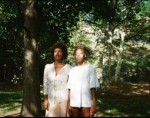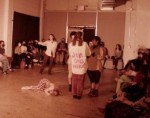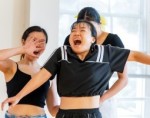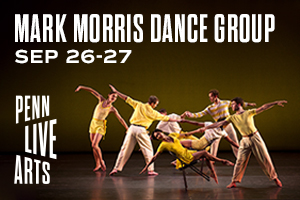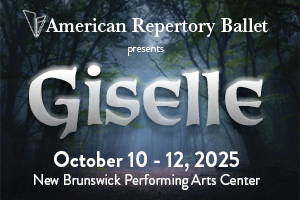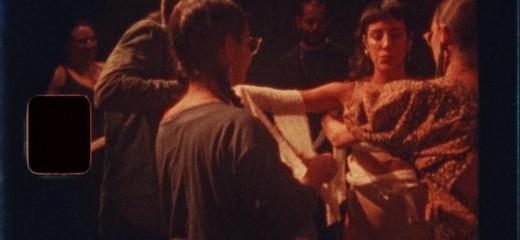
Inside/Out Protest: Embodied Liberation with Yara Travieso
by Ankita
Yara Travieso is a NYC-based Cuban-Venezuelan-American anti-disciplinary artist, educator, and community collaborator working in performance, film, and ritual. Travieso’s practice listens to the collective body, including nature, as a means of sensing a moment of individual and collective liberation. I caught up with her after we participated in Paola Mendoza’s collective demand to release the men wrongfully sent to the CECOT confinement center in El Salvador. This is an excerpt from our full conversation.
Ankita Sharma: Your bio used to state that you were an artist working in performance, film, ritual, and protest. Protest is no longer included – what changed?
Yara Travieso: I would call it a liberation practice now. I always felt there was a gap there for me with American practices in protest and activism. It’s an outside/in practice – a collective, emergent happening functioning from a place of urgency, working within the systems that validate that urgency. Protest that comes from a place of wound, fire, rage, and pain.
I want an inside/out practice – a listening practice, both in my body, and with nature and the people in my life. When I acted from the wound alone, I was exhausted and in constant reaction to violent systems. Now, I know the only way I can survive is if I soften. The more I can do that, the more clarity I find in what my work of service is.
So, the protest and activist work looks like liberatory embodied practices towards that softening – creating a sense of liberation in the body that’s louder than the fear of oppression. Including in my own communities – immigrant, Latin American, queer – practicing embodied liberation is hard when everything around us is teling us to be terrified, contracted, and closed. The practice is sensing that fear and not denying it, rather, softening into it to make room for more than just fear.
AS: How does that softening show up in your artistic process?
YT: In 2023, after a few years of creating for myself, I brought my work back to the public at Chelsea Factory. I was terrified to come back to this place that I had ingested pain from – this place being the US art world and the politics that come with being an artist in a capitalist, colonized structure. So, I created a ceremony for my body to return to performance in a new way. A collective ritual asking for tenderness. Something that I hadn’t asked for in my life.
Since then, my life has changed. I met tenderness for the first time. Prior to that, I didn’t know how to access it. And now, I can conjure it. I’m glad I started with my body because it taught me that I can’t impose liberation on anybody. That practice was emergent – me listening to what my body needed. How do we wake up the desire for liberation in our body, and how do we welcome tenderness while not ignoring the violence around us? That’s what tenderness does to me – it expands me to feel and hold more of the truth of what’s happening in my body and in the world, rather than grip tighter with fear.
AS: How does tenderness go against dominant aesthetics in performance spaces?
YT: Performance is a sense of form. I don’t think of violently trying to control this form anymore. I now think of performance as an empathetic reflection of form around us. Nature has its own form. Performance can be an opportunity to witness that natural form – without trying to control it or make it rigid. That need for control is partially fear, and it makes me anxious. That poisonous control is part of how I survived controlling systems, part of my past work, and part of who I am. And that’s part of the formlessness of everything – admitting I’m also a part of this thing.
AS: Speaking of that control – I think of your work within its liberatory framework, so I’m surprised to see strong eurocentric training in your movement. What was your training like, and how does that impact you?
YT: When I was younger, I grew up in a loving but chaotic environment. My parents are immigrants, people were ill, and there were high expectations as a first-gen American daughter. My first loves were joropo (a Venezuelan folk dance), salsa, rumba, flamenco – social dances we did in the backyard. Then, I was reluctantly pushed into ballet. Surprisingly, I loved ballet.
Growing up around so much that I could not control made the submissiveness within ballet pleasurable. Being told who you are was comforting. I didn’t need to be in my truth, which would mean going against everything around me. So it felt safe to be in that sort of militancy.
Then, I went to Juilliard. I didn’t want to go to a dance conservatory, but part of it was getting the scholarship and giving my parents the American dream they worked hard for. At Juilliard, even though I was the only Latina my year and culturally had no place there, I had that militancy in my body, so I could fit in aesthetically. I used to deny it, but now I think: this is part of what’s here. How do I work with what’s here? Sometimes, I do beautiful eurocentric style work, but also, my life is dancing barefoot in the park with my community – Cuban, Venezuelan, salsa/rumba – and discovering new embodied forms by listening. This is all actually my practice.
AS: You now work as an educator, challenging these institutions that once challenged you. How do you encourage people in institutions to adopt inside/out listening?
YT: For students – when you think of Western institutionalized practices, you think of obeying, following order, pushing your body, and reaching goals. These are all human responses to a world that’s a mess. Sometimes we lean into control because that’s all we can grasp. But, instead of going towards accomplishment, what if you could be in your body now, wildly free? How can you start cultivating that? Being obedient is a way to avoid freedom, truth, and complexity. Once you meet your wholeness, you cannot go back. You don’t need the system to tell you who to be or what to do because your body will.
For people struggling within institutions – go to the people and the paths of least resistance. Create coalitions with others who validate how you feel. From there, you’ve built a culture. That culture can approach those who don’t see things the same way, with the goal of deepening, connecting, and building something together. Institutions are rigid, but they’re built of people.
People are not rigid. Our trans family teaches us that people are not rigid. When we build too many boundaries, we kill that nature of transformation that we are. Boundaries are good when there’s real violence, but when there’s a little space, that is the space to practice fluidity and transformation. I do believe in this. I do this with institutions. Most of them aren’t comfortable with it, but at least people know how I feel, and I’ve proposed an alternative path. It’s up to them if they want to keep me. Nevertheless, I’m in my truth. And that is a lot for me.
As artists confront the difficulties of sitting in their truth in increasingly hostile political environments, my conversation with Yara reminds me of the value of art as tender resistance. No matter its form, tender resistance listens to truth and reflects it back to the world as a confrontation against systems that harm the collective body – a practice we could all gently soften into.
Homepage Image Description: A composite still from Pajarillo, Como No Voy A Llorar? (Little Birdy, How Could I Not Cry). Travieso stands naked on concrete in front of an abstract gray digital background. With eyes closed, she holds a large black satin fabric that billows out to her left. Covering her body is an image of a large bird-like creature fallen on the ground in a desert landscape, with a child and adult looking on.
Photo by Yara Travieso
Article Page Image Description: A scene from Ceremonia I: In Defense of Tenderness. Travieso, draped in white fabric with eyes closed in a somber, meditative expression, is surrounded by five audience members who look on, some gently adding cloth to her body. The image itself is shot on a 8mm film camera, lending a warm, faded grain that adds a reflective quality to the photo.
Photo by Brighid Greene
By Ankita
August 16, 2025


